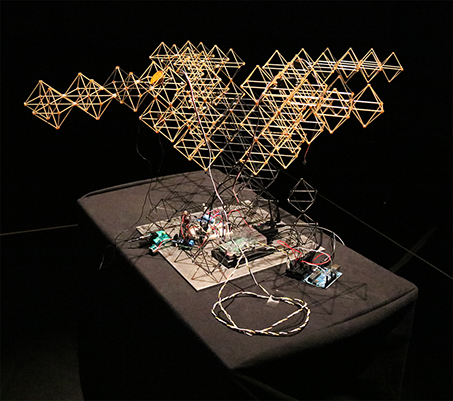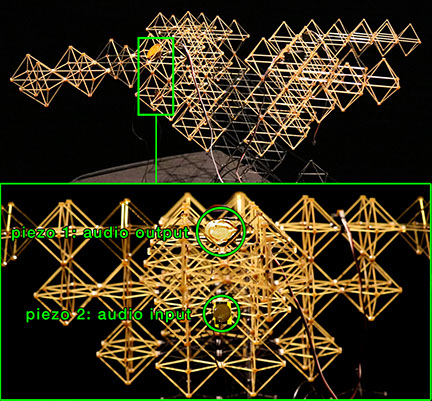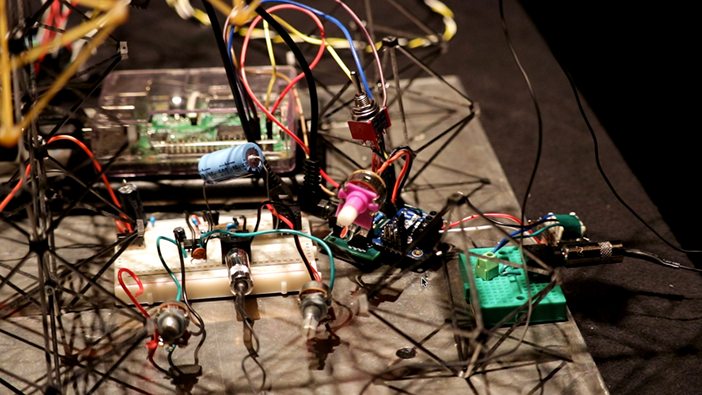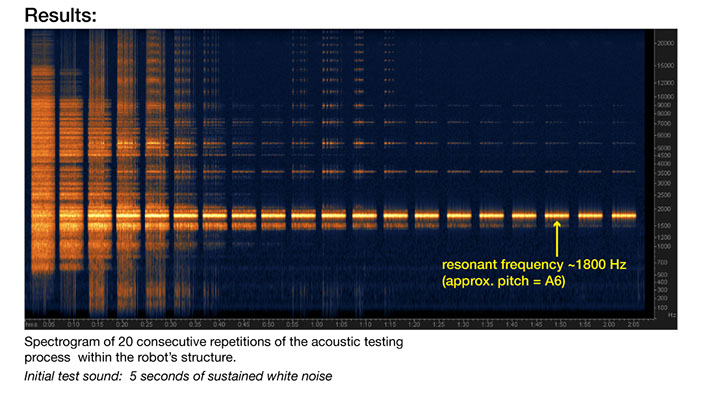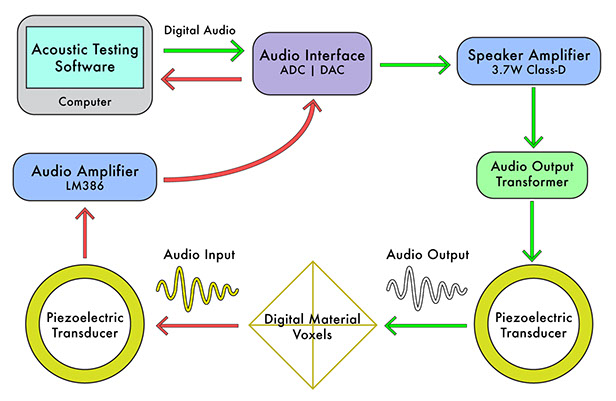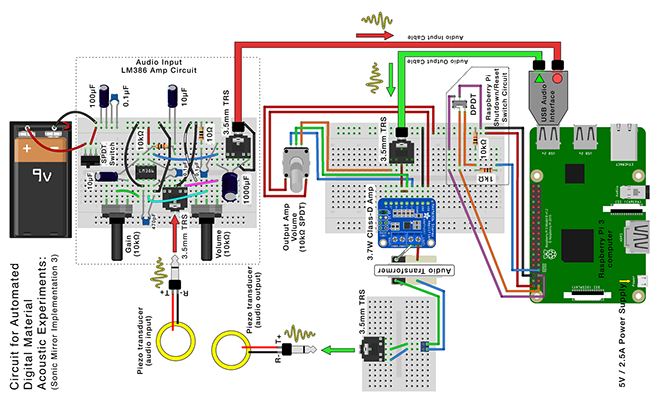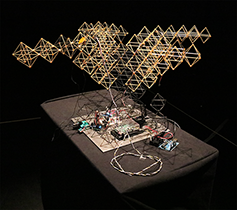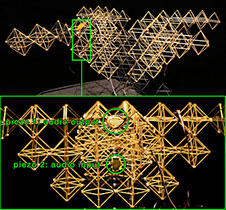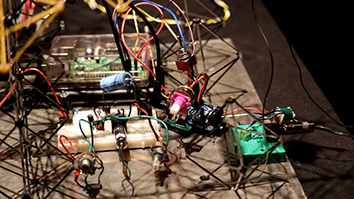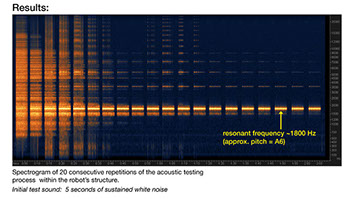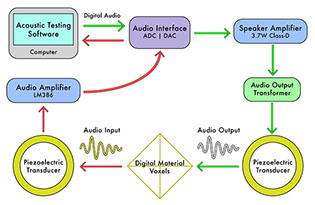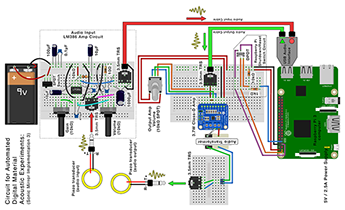SCOTT TOOBY
Use headphones or good speakers for the best listening experience.
The Sonic Mirror is an electronic instrument for generative music and sound creation, interactive sound installation design, and acoustic experimentation. Documented in this video is one version of the Sonic Mirror instrument adapted for an interdisciplinary research collaboration between the artist (Scott Tooby); researchers at the University of California Santa Cruz’s Dynamics, Autonomous Navigation, Surface Engineering and Robotics (DANSER) engineering lab; and NASA’s Coded Structures Lab at Ames Research Center.
This experiment explores the viability of using embeddable audio and computing systems to measure the resonant frequencies of digital materials – a new ultra-light material technology developed by scientists from NASA’s Coded Structures Lab. Relative to their size and density, digital materials are stronger than any previously known ultra-light material, and they have many potential applications for aerospace engineering – including flexible airplane wings, soft robotics, and space station construction.
The soft robot is made of digital cellular solids (a type of digital material), and was designed and engineered by DANSER Lab researchers. Through simple linear actuation of adjacent nodes in its structure, it can exhibit larger-scale rotation of its ligaments – presenting a new method of biologically-inspired robotic locomotion.
In regards to the acoustic testing process, the Sonic Mirror instrument system performs Recursive Acoustic Convolution to reveal the resonant frequencies of the robot’s structure using two mounted piezoelectric transducers – which function as a form of “microphone” and “speaker.” First, white noise is played through the robot’s structure and the resulting sound is recorded and processed. Next, the recording is played back through the structure and re-recorded. This process repeats indefinitely, and with each iteration the resonant frequencies of the combined structure and audio system are increasingly revealed.
The robot’s digital material structure acts as a natural filter so that with each iteration of the process, the frequencies of the audio output which overlap with the resonant frequencies of the structure are accentuated, while frequencies that do not overlap are attenuated.
Measuring the resonant frequencies of digital materials allows researchers to better understand their complex structural properties, and ultimately learn how to make safe and reliable constructions out of them. At a broader level, this research is exploring the feasibility of using automated digital audio and computing systems to monitor the structural health of digital materials.
To date, the Sonic Mirror instrument system has not only been implemented for automated acoustic testing, but has been used for the creation of interactive room-scale sound installations, as well as a collection of hardware instruments.
MUSIC
HELLO
CONTACT
